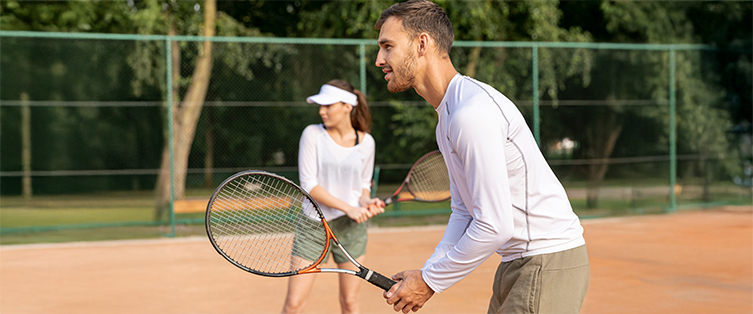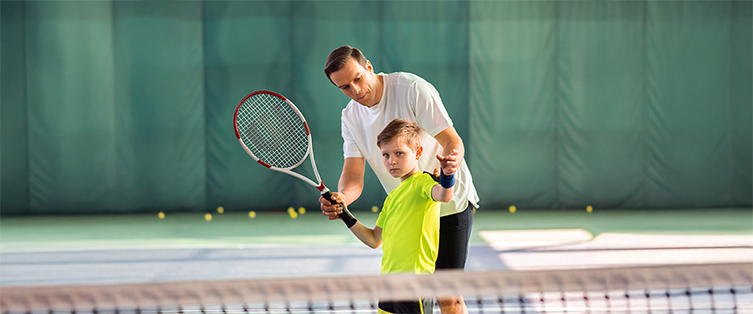Kickboxing is a popular combat sport that can make for a thrilling workout. The physically demanding exercise can be good for your heart, lungs, coordination, balance, and even stress relief. Training for just an hour or two a few times a week can improve your overall physical and mental health, and with the right instructor, getting good at kickboxing can be as easy as learning the proper techniques.
Kickboxing Basics
Kickboxing is a type of standing-level fighting sport that incorporates various combat styles with martial arts. Elements of fighting include a Western-style type of punching, as well as kicks and knee strikes. Kickboxing is a unique but straightforward form of sport discipline, developed in Japan in the 1960s as a triple-hybrid between Western boxing, Muay Thai, and Karate.
Kicking Techniques in Kickboxing
As kickboxing is a full-contact sport, mastering both offensive and defensive techniques is imperative. For instance, kicking is usually an offensive move, and techniques consist of:
- High kick
- Low (or leg) kick
- Roundhouse body kick
- Spinning back kick
- Axe kick
- Jump kick
- Cartwheel kick
- Teep kick
The teep, or push, kick can also be used defensively. Some techniques are more advanced than others and can land on the opponent’s head, neck, arms, ribs, and back. Groin kicking is generally not allowed, but it is best to be prepared for any possible injury.
Punching Techniques in Kickboxing
Kickboxing is known for combining kicking and punching moves, which can make for complex choreography. These combinations require fighters to throw kicks and punches at high speeds, so understanding the mechanics of each is essential when learning how to kickbox. Some punching techniques in kickboxing include:
- Jab
- Straight/Cross
- Uppercut
- Hook
- Spinning backfist
- Superman punch
Any technique can be improved or used in combination with others to achieve effective maneuvers that play to a kickboxer’s strengths and skills. Punching techniques in particular can be as basic or as advanced as desired, but good basic punching skills can be built on over time.
What are the Benefits of Learning Kickboxing?
Some kickboxers begin their training very young, discovering their passion early on. Others choose a few kickboxing courses to satisfy extra-curricular requirements, and some take their very first class much later on in life. Regardless of age or physical ability, there are many benefits to learning kickboxing.
Improved fitness
Cardio and strength training are combined to improve agility and stamina when it comes to kickboxing. High-intensity workouts like this tone muscle and build endurance, which can improve overall fitness and physical health.
Weight loss
Kickboxing is a fun, exciting exercise that can facilitate weight loss if practiced regularly. As a full-body workout, kickboxers who train for one hour will burn between 350 and 450 calories within that time frame. Working with a trainer, you can facilitate an effective weight loss plan with a balanced diet structure and a training schedule that fits your individual health needs.
Self-defense
At its core, kickboxing is skillfully punching and kicking with power, confidence, and finesse. Knowing how to block, hit, or kick an assailant provides an added advantage when it comes to self-defense. The more you train as a kickboxer, the more effective your ability to defend yourself will become.
Stress relief
Physical exercise reduces your body’s production of stress hormones while releasing endorphins that soothe stress and improve your mood. Because kickboxing is such a high-intensity exercise, regular training can relieve stress at a higher and more consistent rate than other forms of exercise.
Confidence
Studies show that honing a physical discipline, especially a sport like kickboxing, improves coordination and confidence. Experienced kickboxers are sure of their movements and have learned to tune into their bodies enough to trust their instincts. Improving balance and coordination this way can help reduce anxiety and self-doubt in virtually every aspect of life.
Enhanced mood and mental health
Due to the stress-relieving properties of kickboxing and the aforementioned health benefits, regular training can result in better overall mental health and mood. Kickboxing, along with approved mental health treatments, can help alleviate anxiety, depression, and other disorders that may be diminishing your quality of life.
Many people prefer kickboxing over traditional martial arts and other combat sports for various reasons. While the list of benefits to kickboxing is long, the only way to know if it is the right sport for you is to attend an introductory class. Instructors can help assess your abilities and what skills you may need to work on and provide you with some direction. However, kickboxing is a relatively regimented sport that requires commitment and dedication, so only you can decide if it is the right fit for you.
What Gear Do I Need for Kickboxing Class?
It is best for new kickboxing students to refer to their instructor’s guidance regarding necessary gear. However, for those who are not yet enrolled in a kickboxing class, basic equipment requirements generally include:
- Boxing or sparring gloves
- Hand wraps
- Headgear
- Mouthguard
- Shin guards
- Water bottle
Additionally, it is vital to wear comfortable but well-fitting clothing. Loose or baggy clothes, jewelry, and street shoes can cause injury if worn when kickboxing. For more individualised advice, speak with your kickboxing instructor about what gear you might need.
How Will I Get Good at Kickboxing?
Kickboxing does require a fair amount of technical training, but personal style is up to the kickboxer themselves. A coach can help determine physical strengths and weaknesses that inform combat approaches, but honing your own technique can give you an edge that your opponent will not see coming.
Some of the greatest kickboxing legends of all time are people who developed their strengths in such a way that any weaknesses were negligible in a match:
Ernesto Hoost
Ernesto Hoost, often considered one of the greatest kickboxers of all time, was nicknamed “Mr. Perfect” for his fighting style. His speed and technical precision were unmatched – especially within the complex combinations he used, which were usually followed up by his trademark low-kick. He won four K-1 World Grand Prix tournaments but totaled 99 wins throughout his kickboxing career.
Peter Aerts
Peter “Mr. K-1” Aerts, or “The Lumberjack” as some fans know him, won three K-1 World Grand Prix tournaments in under two decades during his career as a professional kickboxer. With 108 wins total before he retired in 2020, Aerts perfected a brutal style of fighting using powerful kicks that routinely resulted in knockouts. He was exceptionally skilled in his ability to build distance before an attack, likely due to his years of Kyokushin karate training.
Semmy Schilt
Semmy Schilt, another four-time K-1 World Grand Prix champion, stands at over 210 centimeters and weighs more than 18 stone. Despite his massive size, Schilt was able to master multiple combat sports by perfecting his speed, agility, and technique. With his background in karate training and natural strength, he made a formidable opponent in both kickboxing and MMA (Mixed Martial Arts).
Book a Kickboxing Class in Dubai
Many people in Dubai train with local kickboxing instructors for a healthy way to lose weight, tone muscle, or improve mental and physical fitness. As an increasingly popular sport, kickboxing classes are becoming more widely available to children and adults, which can conveniently be booked online.






Leave a Reply